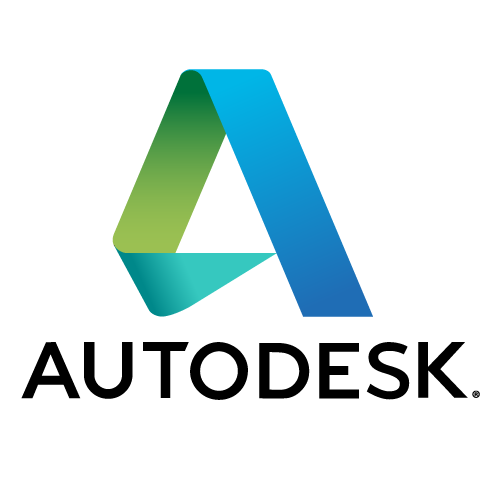Autodesk 

Another year went by for Autodesk, once again with many change initiatives at its heart and the ardour to redefine the ‘future of making things’. On a typical day of LA fall in November 2017, the audience gathered at the Venetian’s ballroom, gushed as Andrew Anagnost, the President and CEO, Autodesk [NASDAQ: ADSK] recalled his visit to the largest Autodesk University (AU) in the world while announcing the company’s Q3 results. “There were over 10,000 design, engineering construction, manufacturing and film production professionals in attendance. And as usual, their enthusiasm for and dedication to our products is absolutely inspiring,” addressed Anagnost. “Q3 marks our return to revenue growth and we continue to make excellent progress on our two major initiatives, completing the subscription transition and expanding beyond design with cloud based solutions for construction and manufacturing.”
Under Anagnost’s earlier leadership roles and involvement, Autodesk smoothly transitioned into a Software-as-a-service provider, rolling out superior solutions for the manufacturing customers and also hugely impacting ROIs, with about $500 million, alone from the Autodesk Inventor software.
Anagnost was also among the visionaries that successfully headed one of the reportedly riskiest moves for Autodesk — changing its licencing into purely subscription-based model. The CEO also recommends the adoption of consumption-based solution model delivered through cloud and charged as per the usage. Under his reign as the new thought-leader, Autodesk is prepping to propel new trends like AI into the nascent manufacturing technology markets.
“Nobody out there starting a software company right now is thinking of perpetual licensing,” said Anagnost. “I also believe machine learning algorithms and highly compute intensive algorithms will turn most subscription companies into consumption companies. That’s inevitable,” reports a press release.
At the conference, the excitement and confusion was brewing among the audience as company’s tech-gurus and industry experts created an uninhibited forum, pitching cutting-edge and bold concepts such as AI and generative design to revamp manufacturing processes. Anagnost delved deeper into Autodesk’s generative design initiatives, Project DreamCatcher that is all set to implant the seed of robust optimization in its premier additive manufacturing software tool, Netfabb. The software’s generative design is based on the idea of providing manufacturers with the visibility to determine ‘all possible permutations of a solution’ to deftly identify design alternatives. The software has a set of predetermined design goals as well as parameters like materials, cost constraints and manufacturing methods. This aids manufacturing decisions by constantly ‘testing and learning from each iteration about what works and what doesn’t’ , as per the Autodesk reports.
Many tech evangelists with their know-how may perhaps describe the design as being purely algorithm-based or AI-driven. But, with the Autodesk’s Netfabb’s generative design vision, these CAD solutions are similar to autonomous or driver-less cars! This means complete freedom from regular interventions at the manufacturing floor and complete automation. This would mark another shift in the design world for manufacturing.
A Real Change Maker ?
Since the last 25 years of its operation, Autodesk has undoubtedly donned an exemplary role as a ‘change maker’ and the cause for its uniqueness is its sheer willingness to embrace technological change. Be it the cloud computing or the mobile, social and collaboration technology, Autodesk has always been at the forefront with constant innovation to drive customers to explore profound ways to design, make and use things.
Through its decades of expertise in design conceptualization and manufacturing optimization and iterations of its CAD/CAM and CNC machining solutions, Autodesk has amassed partnerships with industry leaders like Delcam, Forge and other independent software vendors to integrate or build cutting-edge features in its offerings. The highly data-centric, cloud-enabled manufacturing software stack helps machine, inspect and fabricate better quality parts at a faster pace.
A Brief Run-through of AutoDesk’s Manufacturing Software
Autodesk alongside its association with Delcam provides digital solutions by tapping technologies for CAM, additive manufacturing, simulation, robotics and inspection that fully automate and integrate design with manufacturing processes. Its repertoire of CAM software programs such as PowerMill, FeatureCAM, Fusion 360 and Autodesk HSM are ideal for implementation across machining and array of complex manufacturing workflows. Additionally, Autodesk’s CAD offerings like the PowerShape® CAD simplifies the preparation of surface, solid and mesh models, molds or any complex part to manufacture.
In addition, Autodesk’s TruNest nesting software can be effectively deployed to optimize composite manufacturing as well as perform precision fabrication.
Software that Power Automation Goals Using IoT, Machine Learning, 3D Printing and More
Adding further credence on the relevance of automation at the conference, Anagnost also silenced myths about the AI-enabled level of automation by revealing its optimistic side across verticals including manufacturing through a host of examples. “The new wave of automation will undoubtedly cause disruptions, but technologies like AI and robotics will be far more effective at creating job opportunities and spurring economic growth than many skeptics would have you believe,” added Anagnost.
For advanced manufacturers that have dropped traditional approaches, Autodesk’s solutions are never too far-fetched or out-dated. To power automation goals in today’s manufacturing units, Autodesk® PowerMill Robot is a complete stack of powerful, flexible and user-friendly tools that helps program off-line robots, simplify optimization of robotic paths and simulating virtual mock-up of the complete manufacturing cell and systems. The purpose of this offering is to ease manufacturing and design hurdles that impact speed, accuracy, quality and cost factors. The software helps predict changes and product design issues at early stage of production, reducing cost and late implementation risks.
Fusion Connect of AutoDesk is another software that has charted a new milestone in the manufacturing arena by bringing forth the futuristic vision of virtually linking product data in reporting devices by using advanced analytics and cloud computing. The IoT based Fusion Connect helps generate real-world performance report of the product, forecast product designs that work or fail and optimize field supply chain and material replenishment costs.
Autodesk also leverages on prowess of other trending technologies such as machine-learning to facilitate IoT platfroms such as Dor, a leading provider of camera-equipped monitoring device that tracks foot traffic and store the information on cloud in order to predict insights about ways the customers can impact businesses. Experts at the conference also substantiated on the benefits of unlocking the potential of advanced monitoring tools that are based on machine learning and strong analytics to fully push the manufacturing units to the bold new world of IoT.
3D additive printing is another segment where Autodesk is spearheading transformations for the manufacturers through its Within Medical software and a part of the Autodesk Fusion 360. The users of generative design software will be able to use algorithms to unravel the various design patterns to quickly to select the best product design and structure to create custom products and also run multiple design iterations.
What the Future Holds?
After championing some of the changes over the years that were outlined at the conference, Autodesk is certain about driving a new wave of evolution in manufacturing by leveraging its portfolio of offerings. “We’ve been talking about the robot revolution, about numerous kinds of automation, new capabilities that are indisputably going to replace some of the things you do everyday. So what does it mean for your job? Are we moving to a world of driver-less cars, and driver-less CAD?” pondered Anagnost and the audience quickly recognized his tone that signified many new chapters of possibilities for Autodesk.




































